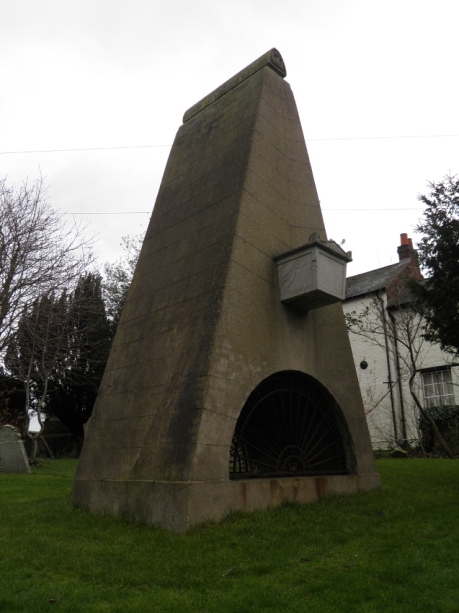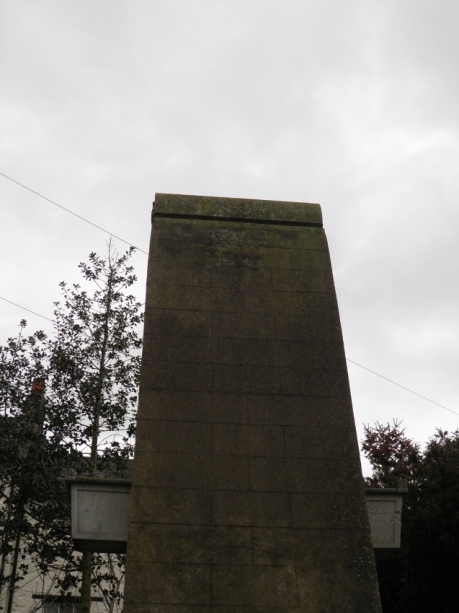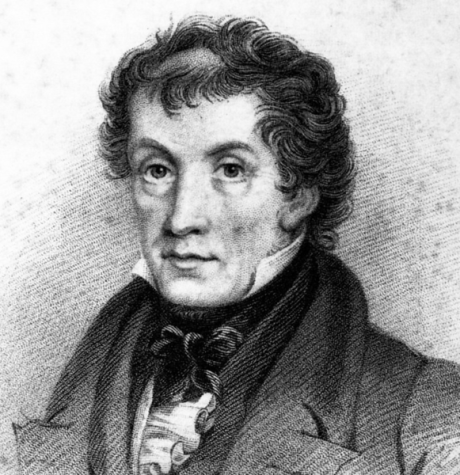The Floating Coffin of Pinner
February 20, 2012
At the top of Pinner’s medieval high street, shielded from sight by the L’Orient restaurant, sits the 14th century St John’s Church.
In the small graveyard that skirts the church (sadly, it was entirely refurbished in flint in 1880, so little of the ancient building remains) is a unique wedge-shaped memorial.
Halfway up, a coffin seems to protrude, an end jutting out of each side, as if it’s been picked up and hurled through the centre of the triangular monument.
It was remarked upon by Charles Harper in 1902, in his book Cycle Rides Around London.
An odd tomb, in the shape of a tower, is to be seen in the churchyard. Now thickly overgrown with ivy, it is a picturesque object, but the peculiarity of it is that the body of the person “buried” here a certain William London, in 1809 is contained in a stone-encased coffin, projecting from the tower, half-way up. The end of the coffin bears an epitaph, which, however, affords no clue to this freak.
Legends, that may or may not be well founded, tell that the descendants of William London, a Scotch merchant, retain the property bequeathed by him so long as he remains “above ground.” This tower is supported on arches filled in with ornamental ironwork, on which appear the mysterious words, “BYDE-MY TYME.” The inquisitive stranger naturally wants to know what he is waiting for, but the mystery is insoluble.
The strange tomb was erected by acclaimed landscape gardener and prolific horticultural author John Claudius Loudon (1783-1843) to the memory of his parents William (d. 1810) and Agnes (died 1841.)

Loudon’s major work was Arboretum et Fruticetum Britannicum (1838), a guide to every species of shrub and tree growing in Britain, complete with their history, the conditions they favoured and illustrations drawn from life. It took Loudon eight years from start until the publication of the final part.
During that time, he developed the influential concept of ‘gardenesque’ planting – whereby plants were placed in such a way that they formed pleasing patterns, and gardens became a clear product of the gardener’s art, rather than trying to mimic nature.
Along with designing Derby’s arboretum (which inspired the Botanical Gardens at Kew), Loudon was also employed by private companies building large, suburban cemeteries to replace the overcrowded city churchyards – a period which coincides with the erection of the memorial to his parents.
Loudon designed cemeteries in Bath, Cambridge and Southampton, and his ideas for public spaces, which he expounded upon in 1843’s On the Laying Out, Planting and managing of Cemeteries, were adopted by Abney Park and the City of London cemeteries. John Claudius did not live for long after the strange monument was erected: he died in 1843 of lung cancer, virtually penniless despite his lifetime of work, and while memorialised on one end of his monument, was buried at Kensal Green.
“Villagers have come up with many theories over the centuries as to its origin and purpose,” wrote James Bond in the local Harrow magazine Limited Edition back in the 1990s. “One legend which will not rest in peace is that the monument is a device to ensure that a legacy considers to be paid to the church – as long as the dearly departed were left above ground.”
It seems unlikely the church would go to such lengths to swindle a dead man’s family out of their full inheritance, and most likely it was simply a rather literal case, even in death, of social climbing (something still alive and well in Pinner today.)
John Claudius Loudon’s unusual monument, completely out of scale with its surroundings, was probably built to signify his parents were above the rest of those buried in the churchyard, and nearer to their God…than thee.
The unique monument was Grade II listed in 1983.






